1599

Tennis nut William Shakespeare gives an early version of the game a plug in Henry V. “What treasure, uncle?” asks Henry, to which Exeter replies: “Tennis balls, my liege.” Cue a froth of tennis allusions from His Highness, including: “We will, in France, by God’s grace, play a set.”
1874
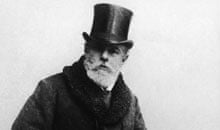
Major Walter Clopton Wingfield does not invent lawn tennis as is often claimed. He merely patents his “new and improved court for playing the ancient game of tennis”. Organisers of the first Wimbledon Championships in 1877 have a greater claim to founding the modern game. They stipulate court dimensions that have changed little.
1884
Wimbledon introduces a ladies’ singles, the Irish having pioneered championship lawn tennis for women in 1879. The earliest female star, Lottie Dod, laments the lack of suitable wear for women who take exercise, saying: “Blessings would be heaped upon anyone who could invent a practical, comfortable and withal becoming costume.”
1900
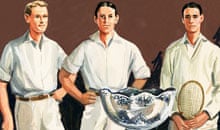
Tennis becomes a team sport as the US plays the British Isles in the first Davis Cup match. The competition quickly grows in numbers and competitiveness. The 1972 final in Romania is notorious for the antics of home player Ion Tiriac, who orchestrates crowd noises during play to disturb his US opponent.
1926
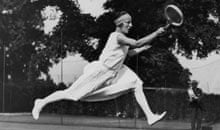
Charles “Cash and Carry” Pyle, an American impresario, recognises the commercial possibilities of promoting tennis and introduces a professional tour. He signs French diva Suzanne Lenglen for an eye-popping $50,000 plus a share of profits. The tour’s success proves tennis has a professional future.
1930
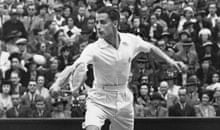
Brame Hillyard causes a fashion sensation at Wimbledon by forsaking long trousers for shorts. Three years later, even more intrepidly, Bunny Austin ventures on to the sacred Centre Court stage baring his knees. Men’s legs are about to become sexy.
1937
Tennis enters the television age with two cameras used to broadcast up to half-an-hour’s play each day from Wimbledon’s Centre Court. On the opening day the tennis takes second place to Queen Mary’s arrival in the Royal Box, with both cameras swinging round to capture her entrance.
1965
Jimmy Van Alen, an American blueblood, introduces the tiebreaker at a tournament in Newport, Rhode Island. “Those sets that go on and on are urological torture for players, spectators and officials,” Van Alen says – and his idea, grudgingly adopted at first, is now universally accepted.
1968

Englishman Mark Cox becomes the first amateur to beat a professional, the American Pancho Gonzales, at the Bournemouth claycourt event, as the division that marginalised the pros finally ends, ushering in the Open era.
1973
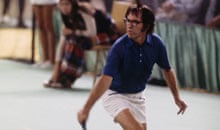
Self-proclaimed male chauvinist pig Bobby Riggs humiliates top female player Margaret Court when, at the age of 55 – 25 years her senior – he gives her a thrashing. Billie Jean King hits back four months later, presenting Riggs with a piglet before beating him in straight sets in the Houston Astrodome.
1974
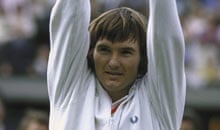
Jimmy Connors wins Wimbledon using a metal-framed Wilson T2000, giving a boost to racket technology that will transform the game. England cricket captain Mike Brearley once saved his sport from metal bats by challenging Dennis Lillee’s right to use one in a Test match. Tennis never had such a saviour.
1977
Lawn tennis is no more as the ILTF drops the L to become the International Tennis Federation. In 1988, the Australian Open moves to a hard surface, which means Wimbledon is now the only grand slam played on grass. How much longer for the game’s original surface?
1993
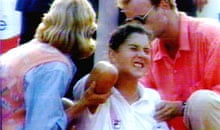
A grim reality of the modern world visits tennis when Monica Seles is stabbed by a spectator as she leaves her chair during a match in Hamburg. The wound needs only two stitches but Seles is badly damaged psychologically and security at tennis events will never be the same.
2006

Paul Hawkins, a young Englishman whose only previous sporting impact was playing minor counties cricket, sees his Hawk-Eye technology adopted by the US Open. The revolutionary step means humans are no longer sole arbiters in all line-judging decisions.
2009
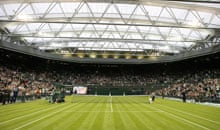
Wimbledon, after years of denying it ever would, goes under cover by installing a retractable roof on Centre Court. Not only will it keep the rain out but also be used so that matches can be played to a conclusion – after dark, if necessary. TV execs are delighted; traditionalists reach for their revolvers.
Source: Read Full Article
